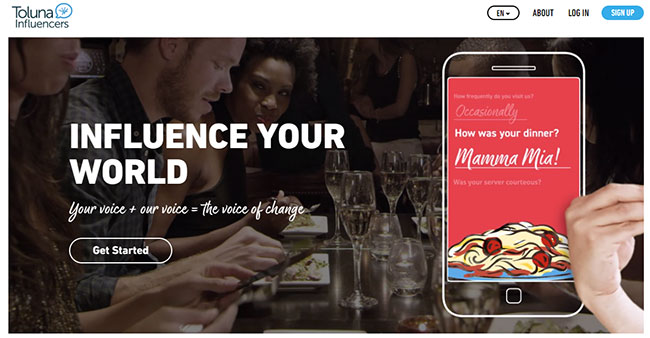I’ll bet you $50 that you probably have enough material in your head to generate at least one online course. That course could be about a traditional topic like physics or chemistry or it could be something less academic, like how to refinish a hardwood floor or make quality moonshine. The bottom line is that any skill that took you time to learn can be marketable; i.e., your knowledge and experience can make you money. The trick is, how do you make your knowledge and experience marketable?
Using an online academy or online university
Nowadays, you can publish online courses via online academies (or online universities) that offer you an easy platform through which you can showcase your talents. Here are just a few such online academies:
This online academy has recently gotten some good press from NBC Today and Forbes, among other high caliber places. At Udemy, anyone can create, publish and promote an online course, regardless of credentials. About 75% of the offered courses are free; the remaining 25% run anywhere from $9 for an Affiliate Marketing for Noobs course to $500 for Jack Welch’s Welch Way Management training course. Udemy keeps 30% of your revenue; if you directly refer a customer to your course (such as through a coupon), Udemy’s cut drops to 15%.
This site, much like Udemy, runs on an open platform and allows anyone to create and publish a free or paid online course. Even better, Odijoo takes only a 10% cut of your revenue. Odijoo also allows you to create your own “campus” from which your courses are displayed and taught, allowing you to create a veritable online education business. Another Odijoo perk is that you can syndicate your content, allowing other instructors to purchase that content and use it in their classes.
Litmos prides itself on being a learning management system (LMS) geared towards business professionals. In tune with that philosophy, Litmos makes it extremely easy to create and add to your own online course and have it distributed on mobile devices. With Litmos, you get a lot of entrepreneurial perks like your own domain name, branding and landing page. There is no cut taken from your revenue; however, you do pay a minimum monthly charge to the site; the Starter membership runs $49/month. As you grab additional perks and students, your monthly fee can become quite high…so this platform may not be for everyone.
Using your own website
If you have a large enough following online, you can use your website or email newsletter to advertise your online course and get people to sign up privately. This allows you to keep all the profits and make additional money through back-end product sales. Additionally, you can offer your students a premium-priced version of your course by including something extra like one-on-one phone/email support. Alternately, you can send your students extra materials like ebooks or give them access to an online forum.
You don’t need a fancy-shmancy platform or software to generate an effective and informative online course. Your lessons can be sent out as weekly emails to your students followed by an assignment that is emailed back to you. Additional course information could be posted on internal website pages that only your students have access to. I know this because I’ve seen it done on several online courses including Linda Formichelli’s Write for Magazines e-course.
There are a number of free online tools available if you need to record your voice or provide a presentation. If you really want to go all out and give a webinar, AnyMeeting offers free web conferencing (up to 200 attendees).
But I’m not an expert on anything!
You might be wondering how you can teach anything when you’ve never received a qualifying degree or wrote a book about the topic. Well, I have a solution for you:
Tim Ferriss of The 4-Hour Workweek fame wrote the following “back-door” formula on becoming an expert in almost anything in 4 weeks*:
1. Join 2-3 trade organizations [in the field that you intend to teach].
2. Read 3 top-selling books on your topic and summarize each one.
3. Give one free 1-3 hour seminar at your closest university and company branches.
4. Offer to write 1-2 articles for trade magazines related to your topic, using steps 1 and 3 as your credibility points.
5. Join ProfNet, a site that journalists use to find subject matter experts and quote them. Then, get quoted.
Tim also makes the following statement: “”Expert” is nebulous media-speak and so overused as to be indefinable. In modern PR terms, proof of expertise in most fields is shown with group affiliations, client lists, writing credentials and media mentions, not IQ points or Ph.D.s.”
How I became a crowdfunding expert
I somehow became an expert on equity crowdfunding even though I’ve never crowdfunded a thing in my life. It all started when I wrote an article on equity crowdfunding for I’ve Tried That and then another one for a small business site. A few months later, the local SCORE Madison chapter contacted me to find out if I’d give a talk about the subject.
I happily agreed and started compiling my Powerpoint slides, learning a lot about exciting SEC regulations in the process. Fortuitously, my Evansville Area Inventors & Entrepreneurs Club hosted a venture capitalist who gave a talk about equity crowdfunding just days before my own talk. As a result, I got the scoop from a “real” expert on what pertinent issues I should discuss. And voilà! An equity crowdfunding expert was born. I now pitch crowdfunding to my clients.
What if I can’t answer a question?
Another major concern for budding online course instructors is that their students will ask questions that they cannot answer on the spot. There are several ways around this uncomfortable possibility, including telling the student that you will get back to him/her with an answer at a later time, asking the class to answer the question, or simply admitting that you just don’t know- but will return with an answer.
The best preventative measure by far is to initially not do live sessions with your students until you can safely anticipate a majority of their questions. And remember that, according to the Pareto principle, about 80% of your students’ questions will cover only 20% of your material, so make sure you learn that portion well. As for the other 20% of your students’ questions- well, while they will come up, it will be less common.
Also, you don’t have to know everything there is to know about your subject matter- you simply have to be one step ahead of your students. In light of this, try to stay informed about your topic and any news that are relevant to it. Set up a Google Alerts on your topic’s keywords and have those alerts go to your email account. In this way, if any new developments are at play in your field of expertise, you’ll be the first to know- and impress your students.
How much money can you make from your own online course?
A well-known name like Jack Welch, who has now sold his Udemy course to 109 students at $500 per student, has grossed $54.5K. No bad.
However, lesser-known Miguel Hernandez, who sells a $297 Udemy course titled How to Create an Awesome Demo Video for Your Business, has outgrossed Welch by one entire figure and come in at over $483K. Your results will probably differ, but even this one example illustrates how creating a course that offers something relevant to your audience, especially a business/technical audience, can earn you some big bucks. And this can happen even if you don’t have a big name.
Fortunately, Miguel also offers another Udemy course titled How to Create an Awesome Online Course for those who are curious.
Much like with teaching courses in the “real world”, it takes time and persistence to create a highly popular (i.e., lucrative) course. But if you’re passionate about your subject matter and (more importantly) about teaching it, creating an online course is a great way to go.
*excluding neurology, automatic transmissions and school boards.




